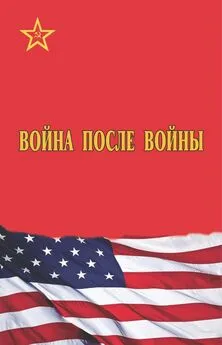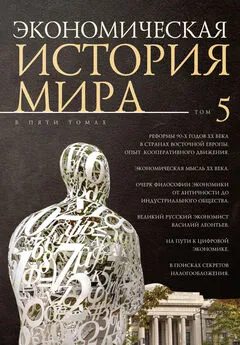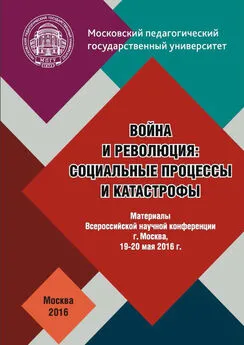Коллектив авторов - Война во время мира: Военизированные конфликты после Первой мировой войны. 1917–1923
- Название:Война во время мира: Военизированные конфликты после Первой мировой войны. 1917–1923
- Автор:
- Жанр:
- Издательство:Новое литературное обозрение
- Год:2014
- Город:М.
- ISBN:978-5-4448-0184-0
- Рейтинг:
- Избранное:Добавить в избранное
-
Отзывы:
-
Ваша оценка:
Коллектив авторов - Война во время мира: Военизированные конфликты после Первой мировой войны. 1917–1923 краткое содержание
Война во время мира: Военизированные конфликты после Первой мировой войны. 1917–1923 - читать онлайн бесплатно полную версию (весь текст целиком)
Интервал:
Закладка:
104
Berstein S., Becker J. (Ed.). Histoire de l’anticommunisme en France. Vol. 1: 1917–1940. Paris, 1987. P. 29–62.
105
Gerwarth R. The Central European Counter-Revolution: Paramilitary Violence in Germany, Austria and Hungary after the Great War // Past and Present. 2008. Vol. 200. P 175–209. См. также: Bessel R. Germany after the First World War. Oxford, 1993.
106
Williams G. Proletarian Order. Antonio Gramsci and the Origins of Communism in Italy, 1911–1921. London, 1975. P. 260–261.
107
Lyttelton A. The Seizure of Power. Fascism in Italy, 1919–1929. London, 2004. (1-е изд.: 1973). P.53, 157.
108
Gentile E. Fascismo. Storia e interpretazione. Bari, 2002. P. 206–234 (фашизм как гражданская религия).
109
Wheatcroft S., Davies R.W. Population // Davies R.W., Harrison M., Wheatcroft S. The Economie Transformation of the Soviet Union, 1913–45. Cambridge, 1994.
110
Anet С. Le Bolchevisme tel que je lai vu. Paris, 1919. P. 15.
111
Karsiol W. Der Todesreigen (Problem Film, Germany, 1922).
112
Kellogg М. The Russian Roots of Nazism: White Russians and the Making of National Socialism, 1917–1945. N.Y., 2005.
113
AN. F7 13506. Доклад Propagande bolchéviste , 3 декабря 1918 года.
114
Gallus A. (Hrsg.) Die vergessene Revolution von 1918/19. Göttingen, 2010.
115
AN. F7 13506. Renseignements de Suède et Norvège, 1 ноября 1920 года.
116
Ibid. Franc-Maçonnerie et Bolshévisme, досье 1919–1920 годов.
117
Ibid. Доклад от 19 ноября 1918 года (от «V»).
118
Ibid. Les Monarchistes russes et l’influence de la maçonnerie, 17 января 1920 года.
119
Klier J.D. Russian Jewry as the «Little Nation» of the Russian Revolution // Ro’i Y. (Ed.). Jews and Jewish Life in Russia and the Soviet Union. London, 1995. P. 146–156.
120
Cohn N. Warrant for Genocide: The Jewish World Conspiracy and the Protocols of the Elders of Zion. London, 1996.
121
Abrahamson H. Prayer for the Government: Ukrainians and Jews in Revolutionary Times, 1917–1920. Cambridge (Mass.), 1999; Vital D. A People Apart: The Jews in Europe, 1789–1939. Oxford, 1999. P. 724–726.
122
Herwig H. Tunes of Glory at the Twilight Stage: The Bad-Homburg Crown Council and the Evolution of German Statecraft, 1917/1918 // German Studies Review. 1983. Vol. 6. P. 475–494.
123
Poliakov L. The History of Anti-Semitism. Philadelphia, 2003. Vol. 4. P. 274–276.
124
Churchill W. Zionism versus Bolshevism // Illustrated Sunday Herald. 1920. 8 Febr.
125
Kellogg М. The Russian Roots of Nazism.
126
Roth J. The Spiders Web. N.Y., 2003. P. 4–6.
127
Mosse G. Fallen Soldiers: Reshaping the Memory of the World Wars. Oxford, 1990.
128
О «преображениях» в послевоенной Германии см.: Ziemann В. War Experiences in Rural Germany, 1914–1923. Oxford; N.Y., 2007. P. 214 ff. О концепции «культуры поражения» см.: Schivelbusch W. The Culture of Defeat : On National Trauma, Mourning, and Recovery. N.Y., 2003; Horne J . Defeat and Memory since the French Revolution: Some Reflections // Macleod J. (Ed.). Defeat and Memory. Cultural Histories of Military Defeat since 1815. London, 2008. P. 11–29.
129
Sauer В. Freikorps und Antisemtismus in der Frühzeit der Weimarer Republik // Zeitschrift für Geschichtswissenschaft. Bd. 56. 2008; Gerwarth R. The Central European Counter-Revolution: Paramilitary Violence in Germany, Austria and Hungary after the Great War // Past and Present. 2008. Vol. 200. P. 175–209.
130
См. также очень подробный автобиографический рассказ об этом обучении: Heydendorff Е. Kriegsschule 1912–1914 (österreichisches Staatsarchiv. В 844/74: Heydendorff).
131
Kelemen B. Adatok a szegedi ellenforradalom és a szegedi kormâny tôrténetéhez. Szeged, 1923. О. 495–496. Об Австрии см.: Wiltschegg W. Die Heimwehr: Eine unwiderstehliche Volksbewegung? Münich, 1985. S. 274–280. О Германии см.: Gerwarth R. The Central European Counter-Revolution. См. также: Heydendorff E. Kriegsschule…
132
О «зонах дробления» см.: Bloxham D. The Final Solution: A Genocide. Oxford, 2009. R 84 ff.; Prusin A. V. The Lands Between: Conflict in the East European Borderlands, 1870–1992. Oxford, 2010. P. 73 ff.
133
Этот предмет после 1970-х годов получал поразительно мало внимания, и транснациональные или компаративные исследования по данной теме совершенно отсутствуют. Упомянем следующие «классические» работы: Schulze Н. Freikorps und Republik 1918–1920. Boppard, 1969; Waite R.G.L. Vanguard of Nazism. The Free Corps Movement in Postwar. Germany 1918–23. Cambridge (Mass.), 1952; Botz G. Gewalt in der Politik: Attentate, Zusammenstöße, Putschversuche, Unruhen in Österreich 1918 bis 1938. 2 Aufl. Munich, 1983.
134
Об ухудшении отношений между тылом и фронтом на последних этапах войны см.: Plaschka R.G. etc. (Hrsg.). Innere Front: Militärassistenz, Widerstand und Umsturz in der Donaumonarchie 1918. 2 Bde. München, 1974; Cornwall AL The Undermining of Austria-Hungary: The Battle for Hearts and Minds. N.Y., 2000; Rauchensteiner AL Der Tod des Doppeladlers: Österreich-Ungarn und der Erste Weltkrieg. Graz, 1993. То, что революцию совершили люди, не воевавшие на фронте, являлось типичным обвинением со стороны правых ветеранов. См., например: Starhemberg E.R. Aufzeichnungen (Oberösterreichisches Staatsarchiv, Linz. Nachlass Starhemberg), здесь S. 21. О Германии см.: Bessel R. Germany after the First World War. Oxford, 1993. Конкретно о Мюнхене см.: Seipp A.R. The Ordeal of Peace: Demobilization and the Urban Experience in Britain and Germany, 1917–1921. Farnham, 2009. P. 91–130.
135
NIOD. Doc 1 1380, H, 2: Rauter. О «мире, перевернутом вверх тормашками» см.: Geyer М.Н. Verkehrte Welt: Revolution, Inflation und Moderne. München, 1914–1924. Göttingen, 1998.
136
Kozma М. Makensens Ungarische Husaren: Tagebuch eines Frontoffiziers, 1914 — 1918. Berlin; Wien, 1933. S. 459.
137
Baarenfels E.B. von. Erinnerungen (1947) (österreichisches Staatsarchiv. MS В/120:1), цит. S. 10–13. См. также: Korp A. Der Aufstieg vom Soldaten zum Vizekanzler im Dienste der Heimwehr: Eduard Baar von Baarenfels: Diss. Wien, 1998.
138
Starhemberg E.R. Aufzeichnungen. S. 16–17. См. также: Fey E. Schwertbrüder des Deutschen Ordens. Wien, 1937. S. 218–220.
139
Killinger M. von. Der Klabautermann. Eine Lebensgeschichte. 3 Aufl. München, 1936. S. 263.
140
Starhemberg E.R. Aufzeichnungen. S. 20–22.
141
Общее описание последствий Сен-Жерменского и Трианонского договоров см.: Evans R. The Successor States // Gerwarth R. (Ed.). Twisted Paths: Europe 1914–45. Oxford, 2007. P. 210–236.
142
Sauer B. Vom «Mythos des ewigen Soldatentum»: der Feldzug deutscher Soldaten im Baltikum im Jahre 1919 // ZfG. Bd. 43. 1993; Wilson T Frontiers of Violence: Conflict and Identity in Ulster and Upper Silesia, 1918–1922. Oxford, 2010.
143
О Каринтии см.: Darstellungen aus den Nachkriegskämpfen deutscher Truppen und Freikorps. Bd. 7–8. Berlin, 1941 — 1942, и автобиографический рассказ Яромира Дьякова в: Österreichisches Staatsarchiv. В727: Diakow. См. также: Blasi W. Erlebte österreichische Geschichte am Beispiel des Jaromir Diakow: Diss. Wien, 1995.
144
О Каринтии, а также текст стихотворения см.: Der Sturm auf Völkermarkt am 2. Mai 1919 (Kriegsarchiv [Wien]. В 694, 31: Knaus).
145
Salomon E. von. Die Geächteten. Berlin, 1930. S. 10–11 (английский перевод: Idem. The Outlaws. London, 1931).
146
Starhemberg E.R. Aufzeichnungen. S. 26. О немецком «молодом военном поколении» см.: Wildt М. Generation des Unbedingten. Hamburg, 2000; Donson A. Youth in the Fatherless Land: War Pedagogy, Nationalism, and Authority in Germany, 1914–1918. Cambridge (Mass.), 2010.
147
Gerwarth R. The Central European Counter-Revolution. P. 175 ff.
148
Bodo В. Militia Violence and State Power in Hungary, 1919–1922 // Hungarian Studies Review. 2006. Vol. 33. P. 121–167, особенно p. 131–132; Ziemann B. War Experiences. P. 227 ff.
149
Reulecke J. «Ich möchte einer werden so wie die…»: Männerbünde im 20. Jahrhundert. Frankfurt a.M., 2001. S. 89 ff.
150
См., например: Revolution überall // Innsbrucker Nachrichten. 1918. 12. Nov. S. 2; Bestialische Ermordung von Geiseln // Ibid. 1919. 3. Mai. S. 2 (о баварских коммунистах).
151
Точное число жертв послевоенного военизированного насилия до сих пор является спорным вопросом. О Германии и ее приграничных регионах см.: Schultze Н. Freikorps und Republik, 1918–1920. Boppard, 1968; Sauer В. Vom «Mythos des ewigen Soldatentum»: der Feldzug deutscher Soldaten im Baltikum im Jahre 1919 // ZfG. Bd. 43. 1993; Wilson T. Frontiers of Violence. Что касается Венгрии, то, по оценкам Оскара Йаси, в 1918 году входившего в правительство Карольи, контрреволюционерами было убито не менее 4 тысяч человек, но в недавних исследованиях эта цифра была сокращена до 1500 человек. См.: Jâszi О. Revolution and Counter-Revolution in Hungary. London, 1924. R 120; Bodo B. Paramilitary Violence in Hungary after the First World War // East European Quarterly. 2004. Vol. 38. P. 129–172, cm.p. 167. Согласно подсчетам Герхарда Ботца для Австрии, жертвами политического насилия в годы первой Австрийской республики (12 ноября 1918 — // февраля 1934 года) пало всего 859 человек, однако в эту цифру не включены жертвы убийств, совершенных многочисленными австрийскими волонтерами, сражавшимися в рядах германского фрайкора (Botz G. Gewalt in der Politik. S. 237).
Читать дальшеИнтервал:
Закладка:
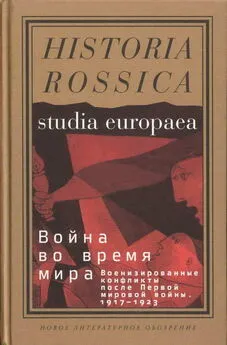

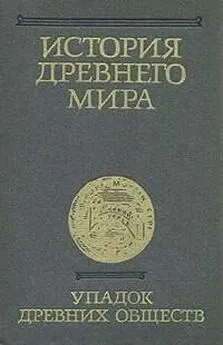


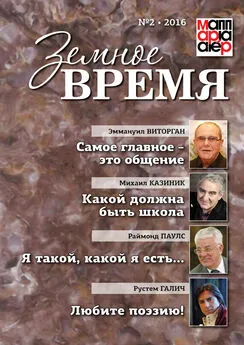
![Коллектив авторов - Закат империи США: Кризисы и конфликты [Сборник]](/books/1074740/kollektiv-avtorov-zakat-imperii-ssha-krizisy-i-kon.webp)
